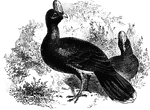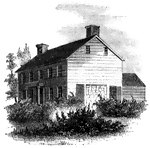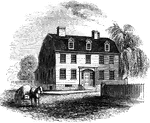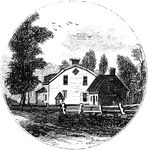
Long Nosed Bandicoot
"Having a long head, with the upper part of the snout much prolonged: the tail is long and tapering;…

Common Opossum
"It has a pointed head, wide gape, numerous sharp teeth, a rough tounge, ears large and naked, small…
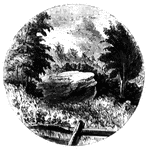
William's Rock
William's Rock. This view is taken from the road, looking northward. In the distance is seen the highest…

Arnold's Battle
Scene of Arnold's naval battle. This sketch was made from the pilot's room of the steam-boat just after…

Fort at Chambly
Fort at Chambly, this is a view of the south and west sides of the fort, looking toward the river. It…
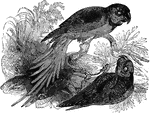
Alexanderine Parakeet
The alexandrine parakeet is a long-tailed species, originally brought back from India by Alexander the…

California Partridge
Found in California, the California partridge averages aproximately nine and a quarter inches in length,…
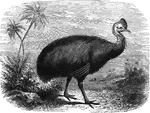
Cassowary
The cassowary is a large, flightless bird native to Australia and New Guinea. Its head and neeck have…
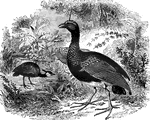
Horned Screamer
Also known as the kamichi, the horned screamer gets its name from the three inch horn on its head, as…
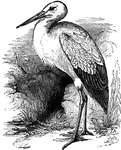
White Stork
Measuring about three feet in length, the white stork migrates to Europe during the summer, and back…
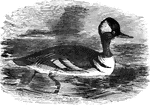
Hooded Merganser
Measuring about nineteen inches long, the hooded merganser is common in North America, its head adorned…
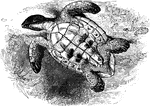
Imbricated turtle, overturned
An imbricated turtle, flipped onto its back, revealing its underbelly.
Lanceolate
Shaped like a spear head, broadest near base, tapering to apex, and several times as long as broad.

Glass-snake
Found in the woods of the Southern States, the glass-snake has the head of a lizard, but the body resembles…

Brant's Rock
Brant's Rock. This rock, which is about four feet high, lies in a field on the left of the road leading…

Morristown
Washington's head-quarters at Morristown. This view is from the forks of the road, directly in front…
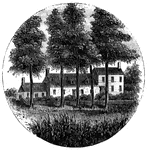
Steuben's Head-Quarters
Steuben's head-quarters. This view is from the field in front of the house, looking north. The dwelling…

Monocasy Island
The Susquehanna at Monocasy Island. This view is from the left of eastern bank of the Susquehanna, opposite…

Red House
The Red House. The "Red House" is situated upon the street in Wilkesbarre next the river, and about…

Agnew and Erskine
Head-quarters of Agnew and Erskine. This house is on the south bank of Still River, at the north end…

Cross section of a viper head
Section of the head of a serpent. a, poison fangs; b, poison glands; c, conductor for the poison; d,…

Form of the embryo
"Figure 2 gives an outline of its form; the arrows at the side of the head show the currents of water…
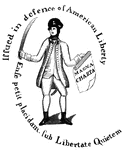
Treasury Note
"Reverse of a Massachusetts Treasury note. This is a fac simile of the device on the back of one of…

Tonomy Hill
"Top of Tonomy Hill. This view is from the northside of the hill, looking south. The wall appearance…
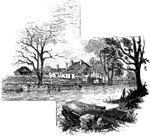
Greene and Knox Head-Quarters
"Head-quarters of Greene and Knox. This view is from the turnpike road, looking southeast. The water…

Society of the Cincinnati
"Society of the Cincinnati, member's certificate. This engraving is a fac simile of a certificate, about…

Order of the Cincinnati
"Order of the Cincinnati. This was drawn from an original in the possession of Edward Phalon, Esq.,…

Surinam toad
"At the breeding season the back of the female exhbits a number of small pits; into these pits the male…
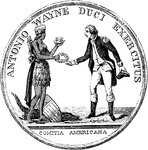
Wayne Medal Front
"Gold medal awarded by Congress to General Wayne. This is a representation of the medal, the size of…
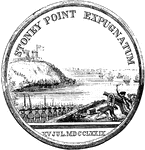
Wayne Medal Back
"Gold medal awarded by Congress to General Wayne. This is a representation of the medal, the size of…

Perch skeleton
"The bones of fishes are of a less dense and compact nature than in the higher order of animals; in…
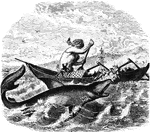
Shark
"Theses are at once distinguished by their elongated, spindle-shaped bodies, their branchial apertures…

Hammerhead Shark
"Having a body like other sharks, but with a double snout like a double-headed hammer, and having an…

Electric Ray
"It is remarkable for an electric battery situated between the pectorals and head and gills; this is…
Sturgeon
"These have an elongated body, and a funnel-shaped and protrusible mouth, without teeth, places on the…

Seahorse
"These animals have a head of the shape of a horse, and a long tail without any fin, but which is used…
Armed Bullhead
"Noted for being completely covered in horny scales. It is common on all the coasts of Europe and Greenland."…

Gilt-Head
"Twelve inches long, abundant in the Mediterranean, and found on the coasts of Africa and Europe, from…

Pilotfish
"The pilot fish attains a length of about one foot. It is somewhat of the mackerel form, of a silver-gray…
Remora
"About a foot long, and is provided with a pwerful sucker on the top of its head, by which it attackes…

Angler
"The fishing frog is three to five feet long. It has an enormous mouth, armed with numerous pointed…

Gilt-Head
"Six to eight inches long, its general color being red varied with green." — Goodrich, 1859

Parr
"Found in European waters, and being marked on the back by transverse dusky bars very similar to those…
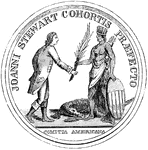
Stewart Medal Front
"Medal awarded to Major Stewart. This represents the medal the size of the original. The device is America…
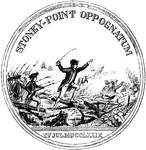
Stewart Medal Back
"Medal awarded to Major Stewart. This represents the medal the size of the original. On the back side…
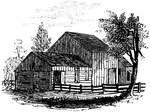
Jameson's Head-quarters
"Colonel Jameson's head-quarters. This is a view of the out-buildings of Mr. Sands, at North Castle,…
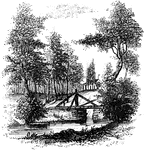
Sleepy Hollow
"Bridge over Sleepy Hollow Creek. Ichabod, according to Irving, in the Legend, returning from…
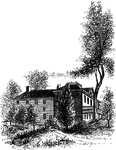
Livingston Mansion
"The Livingston Mansion. This is a view from the lawn on the north side. It is embowerd in trees and…
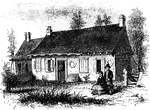
Tappan head-quarters
"Washington's head-quarters at Tappan. This view is from the yard, near the well. The date of its erection…
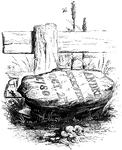
Andre's Execution
"Place of execution. The place of Andre's execution is now designated by a stone, lying on the right…

Princeton battle-ground
"View of the battle-ground near Princeton. This view, looking north, is from the carriage gate of Mr.…


